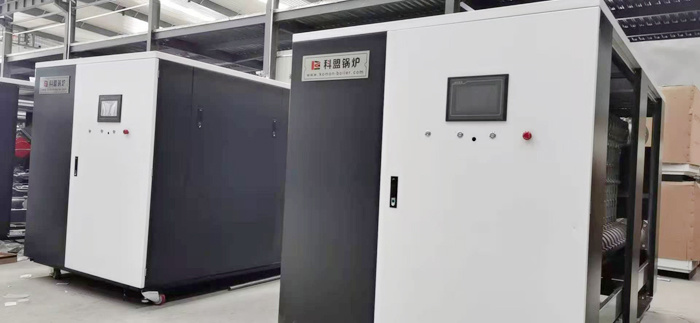Electromagnetic boilers are generally composed of electromagnetic induction heating furnace walls
Release time:
2022-12-21
Electromagnetic boilers generally consist of an electromagnetic induction heater (i.e., a variable frequency speed regulator) and an electromagnetic induction heating furnace wall. The magnetic field of the high-frequency current acts on the electromagnetic coil to create an alternating magnetic field. According to the magnetic effect of the current, the furnace wall creates eddies. Hundreds of thousands of eddies heat the furnace, thus heating the water inside the road body. Because the output power exceeds the normal audio frequency of the human body, there is no noise during operation.
Electricity replacing coalElectromagnetic boilerThe comprehensive promotion of electricity replacing coal has contributed to improving the environment in North China during winter. With the government's subsidy policy for electricity replacing coal and the increasing public awareness of environmental protection, many people have started using electromagnetic boilers for heating. The rapid development of the electromagnetic boiler market has resulted in a wide variety of products with uneven quality, leaving many users unsure how to choose. Today, we will compare the performance characteristics of electromagnetic boilers and semiconductor boilers, two common types of equipment, to give you a reference.

A semiconductor boiler uses resistance heating, with an operating temperature of 380 degrees Celsius. At 380 degrees Celsius, it exhibits high resistance characteristics; the higher the resistance, the greater the heating effect. For example, we don't use copper wire as a heating element because copper has low resistance and doesn't heat up easily. For semiconductor boilers, due to their high resistance characteristics, the heating effect is much better than that of a filament in a light bulb. Due to the material's properties, the semiconductor heating tube will not overheat at a certain temperature, a characteristic that prevents excessive heat loss and improves thermal efficiency.
Semiconductor boilers achieve water-electricity separation, enhancing safety. However, they are not immune to scaling of the heater and gradual power loss. Over time, under conditions of prolonged high temperatures or frequent temperature fluctuations, the electroplated coating on the inner wall is easily worn away, causing significant power loss in the semiconductor boiler and hindering normal heat transfer.
Electromagnetic boilerGenerally, it consists of an electromagnetic induction heater (i.e., a variable frequency converter) and an electromagnetic induction furnace wall. The high-frequency current's magnetic field acts on the electromagnetic coil to generate an alternating magnetic field. Through the magnetic effect of the current, eddy currents are generated in the furnace wall. Thousands of eddy currents heat the furnace chamber, heating the water inside. Because the output power is above the normal human audible frequency range, it operates without noise.
In this heating method, the water and electricity systems are completely separated. When water passes through the heating core, it is cut by magnetic lines of force, producing hydrogen-rich water with unique properties. The electromagnetic boiler uses a water-immersion heating furnace wall, with an inner and outer pipe structure. Water enters through a connecting pipe, circulates inside the furnace body, and is discharged after passing through the outer pipe, achieving a double heat transfer effect. The advantage of this water-immersion furnace wall is that it doubles the heat transfer capacity, improving heat exchange efficiency. This prevents heat loss and facilitates the circulation of water for uniform heating. The double-circulation water carries all the heat to the heat dissipation design, allowing the electromagnetic boiler to achieve 30% energy savings, while also preventing the electromagnetic coil from overheating or burning.
Based on this simple comparison, you can seeElectromagnetic boilerit has relatively more advantages. In the long run, an electromagnetic boiler is recommended; its thermal efficiency will not decrease over time, and its lifespan is longer than that of semiconductor heating equipment. Of course, different people have different preferences, and consumers should choose according to their needs.
Latest News




